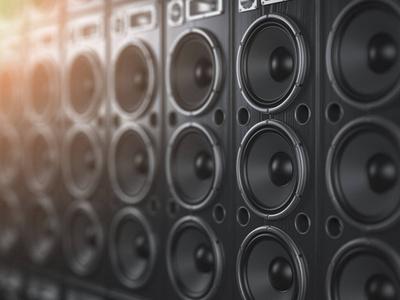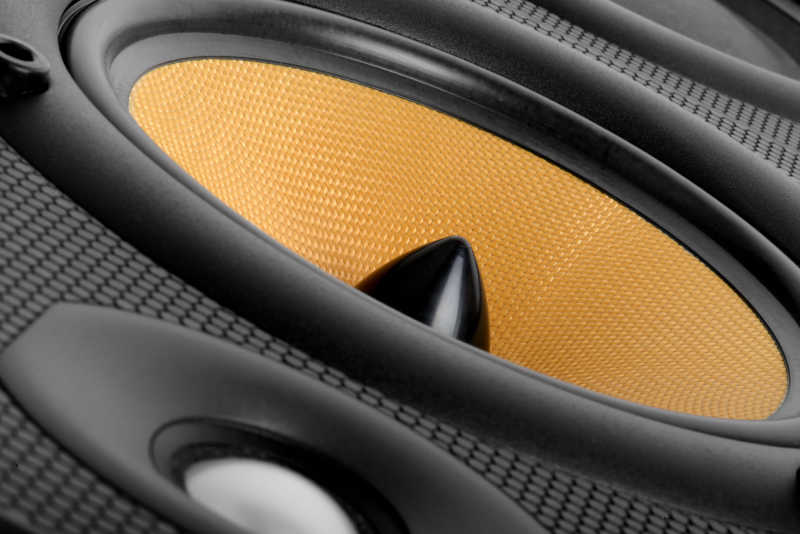

Subwoofer speakers, commonly known as subwoofers, play a very important role in creating a shocking momentum effect. Most brands promote home theater products in the form of a package consisting of an AV amplifier plus five speakers and a subwoofer. The subwoofer is already an indispensable configuration. In fact, a subwoofer with standardized design, exquisite production, and excellent effect. Its effect in audio playback in home theater systems is quite charming.
It’s a pity that the subwoofers on the market with outstanding effects are priced beyond the reach of ordinary people. The price is affordable but the effect is hard to accept. Things in the world are often not satisfactory. However, audio and video enthusiasts who are good at doing things can “do it by themselves and have enough food and clothing.” Based on this, this article intends to give a brief introduction to the design principles of the subwoofer for reference by those who are interested in audio.
Generally speaking, from the perspective of the composition of a subwoofer, bass can also be divided into two categories: active and passive. The so-called active subwoofer refers to a subwoofer that contains a power amplifier, and the circuit part is except for the power amplification. Usually it also has audio frequency filtering (filtering out audio frequency components above the bass) and phase adjustment.
Volume adjustment and other units; and the passive subwoofer is the same as a general speaker, consisting of a unit and a passive power crossover, where the crossover is just a low-pass filter. So that its playback frequency range is only super bass audio. The following will introduce the subwoofer – large unit speaker and power amplifier respectively.
一、Subwoofer cabinet design principles and classifications
In terms of subwoofer design principles, it can be roughly divided into three categories, namely, sealed speakers, inverted speakers and band-pass filtered speakers.
1. Sealed speakers
As the name suggests, this kind of speaker cabinet is completely enclosed, the same as the so-called closed box structure.
Sealed speakers are characterized by simple structure and relatively good transient response. That is, the listening experience is deep and clear. The disadvantage is that under the same volume, compared with other types of speakers, its low-frequency dive cutoff frequency is higher than other speakers. Therefore, if you want to obtain a lower low-frequency dive frequency, a larger cabinet volume is usually required. And choose a speaker unit with a larger diameter, and the efficiency of the speaker, that is, the sensitivity, is lower than other types of speakers.
In terms of box volume design, there is engineering design data for reference. When the resonant frequency Fs of the speaker unit is lower than 50Hz, the box volume should preferably be greater than 1.4 liters. When Fs is greater than 50Hz, the box volume should preferably be greater than 2 liters.
When making and adjusting a closed box, it is usually necessary to fill the box with a large amount of sound-absorbing cotton. The materials are mainly glass fiber and long-fiber wool, which can improve the flexibility of the speaker and achieve the equivalent effect of increasing the volume of the box. Theoretically Up to 40%. In practice, it can be calculated as an equivalent increase in volume of 15%-24%, which is equivalent to reducing the volume of the box.
In addition, filling sound-absorbing cotton can also improve the efficiency of the speaker. The correct filling amount can increase the efficiency of the speaker by up to 15%. The amount of sound-absorbing cotton usually needs to be determined through repeated listening to ensure that the sound is not muddy (the amount is too large). The principle is that it is dull (too little) and dull (too much), and the same is true for other types of speakers.
For closed-box subwoofers, the requirements for the unit are more stringent than other types of speakers. It is hoped that Fs should be lower than 40Hz, Qts should be 0.3-0.6, and Fs/Qts≤50. In addition, the diameter of the unit is preferably greater than 20cm, and it is a long-stroke design.
2. Inverted speakers
It is the most common type of speaker on the market. The speaker is designed with an inverter tube, which is the so-called bass reflex design.
For inverted speakers, when the unit works above the resonant frequency Fs, the cone displacement is relatively small, so the power tolerance is high and the resonance distortion is small. However, below the resonant frequency, the cone displacement increases significantly and the resonance distortion increases. Under the same volume and unit conditions, inverted speakers can achieve a lower low-frequency dive cutoff frequency than closed speakers. In addition, theoretically, the efficiency of inverted speakers can be about 3dB greater than that of closed speakers.
Of course, the design, production, and adjustment of inverted speakers, including inverted tubes, are more difficult than closed speakers. The inside of the inverted speaker also needs to be filled with an appropriate amount of sound-absorbing cotton, which is usually less than that of a closed box.
In terms of unit selection, Fs should be low-dry 45Hz, Qts should be less than 0.5, and Fs/Qts should be around 100. The unit diameter should be greater than 17cm. In order to obtain greater sound pressure power, it is the same as a closed box. , it is advisable to choose a unit with long stroke design.

3. Bandpass filter speakers
This kind of speaker is relatively rare. It is developed on the basis of closed box and inverted speakers. It has both the design traces of closed box and the characteristics of inverted speakers.
A. Fourth-order bandpass speakers
An opening is added to the closed box cavity, part of which works in the closed box mode, and the other part works in the inverted mode. Therefore, this kind of speaker has the advantages of a closed box and the characteristics of an inverted speaker. The efficiency is higher than that of a pure closed box, and the low-frequency dive cut-off frequency is similar to that of an inverted speaker.
A smaller-diameter unit can be used to obtain a lower dive cut-off frequency. In addition, its bandpass frequency can be adjusted, so the crossover can be simplified because the speaker itself is equivalent to a natural crossover.
In terms of unit selection, it is similar to that of a closed box in principle, but since the efficiency is slightly higher than that of a closed box, and the cone displacement is relatively small, a unit with a smaller diameter and a short stroke can be used.
B. Sixth-order bandpass speakers
In the closed box cavity of the fourth-order bandpass speaker, an opening is added, that is, there are two openings. One of the openings works at a lower frequency, and the other works at a higher frequency. The two are synthesized. It has a frequency response with a certain bandwidth. Compared with the above-mentioned fourth-order bandpass speakers, the adjustability of efficiency and bandwidth is more flexible, and smaller diameter units can be used to obtain lower and deeper bass effects. At the same time, the cone Smaller displacement and lower resonance distortion.
In terms of unit selection, it is basically similar to the inverted speaker, but it is better to control the Qts around 0.4. There are basically no strict requirements for the unit caliber. If you want to obtain high sound pressure power and low distortion output, of course, the unit caliber should be as large as possible. Bigger is better.
Since the airflow and sound pressure of the inverter hole of a bandpass speaker are usually relatively large during operation, especially when operating with large dynamics and ultra-low frequency signals, whether it is a fourth-order bandpass speaker or a sixth-order bandpass speaker, , where possible, the inverter tube should be as large as possible to avoid airflow noise during operation.
In the design of the box, the value of its volume is not calculated based on theory in practical applications. Especially for commodity boxes, it is mainly based on the coordination of appearance and size.
The electroacoustic index depends on the inverter tube and sound absorption. Just adjust the cotton to achieve the best level. Of course, the closer its volume is to the engineering calculation value, the better the performance will be. In addition, in the production of cabinets, the role of internal reinforcement ribs cannot be ignored. Adding some reinforcement ribs at the joints of the cabinet and in the middle of the large board will help reduce the resonance of the speaker, so it is always beneficial to have a heavier cabinet.
